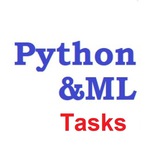👍1🤯1
Given code
def f(n):
def g(x):
return x ** n
return g
g = f(3)
print(g(2), g(3))
What is the name of this technique?
Anonymous Quiz
28%
decorator
10%
convolution
8%
carrying
17%
closure
5%
memoization
8%
generation
2%
robustness
2%
binding
20%
See solution
😁1
What is used to evaluate a model in machine learning?
Anonymous Quiz
2%
Source dataset
37%
Training dataset
50%
Test dataset
6%
Nothing, since there is no point in evaluating the model
6%
See solution
😱2
What will this code do?
from itertools import product
a = [1, 2]
b = [3, 4]
sum(sum(product(a, b), (0, 0)))
👍1🤯1
What will this code do?
def f(x):
try:
print('1', end=" ")
y = 1 * 0 if x % 2 else 1 / 0
except:
y = 0
print('2', end=" ")
else:
print('3', end=" ")
finally:
print('4', end=" ")
return y
print(f(1) + f(2))
Choose your answer
Anonymous Quiz
3%
1 2 4 1 3 4 0
39%
1 3 4 1 2 4 0
11%
1 2 4 1 3 4
3%
1 2 4 0
3%
1 3 4 0
22%
Error
19%
See solution
What will this code do?
class A:
def __init__(self, x=0):
self.x = x
def f(self):
print(self.x)
a = A(2020)
f = a.f
print(f.__self__ is a, end=" ")
print(f.__func__ is f, end=" ")
print(f.__func__ is a.f, end=" ")
print(f.__func__ is A.f, end=" ")
👍1
What will this code do?
import numpy as np
print(np.asarray([100, 200, 300]).astype(np.int8))
Choose your answer
Anonymous Quiz
11%
[100 -56 44]
3%
[100 56 -44]
11%
[100 200 -44]
41%
[100 200 300]
8%
[-28 56 44]
11%
[100 72 84]
16%
See solution
🤯2
What will this code do?
import numpy as np
mat = np.array([[1, 2], [4, 5]])
print(round((mat @ np.linalg.inv(mat)).sum()))
Choose the right option for "callables"
class A:
def __init__(self, x):
self.x = x
def __call__(self):
return self.x
class B:
def __init__(self, x):
self.x = x
def method(self):
return self.x
class C:
def __init__(self, x=3):
self.x = x
def __repr__(self):
return str(self.x)
a = A(1)
b = B(2)
c = C(3)
callables = # your code
print([act() for act in callables])
#Output [1, 2, 3]
Choose your answer
Anonymous Quiz
4%
[a, b, C]
19%
[A, B, C]
46%
[a, b.method, C]
0%
[a.__init__, b.method, C]
8%
[a, b, C.__repr__]
4%
TypeError
19%
See solution
👍5
What will this code do?
import numpy as np
A = np.arange(9).reshape(-1, 3)
print(np.linalg.det(A))
👍2
What design pattern is used in this code?
class A: pass
class B: pass
def f(cls, *args):
return cls(*args)
a = f(A)
b = f(B)
